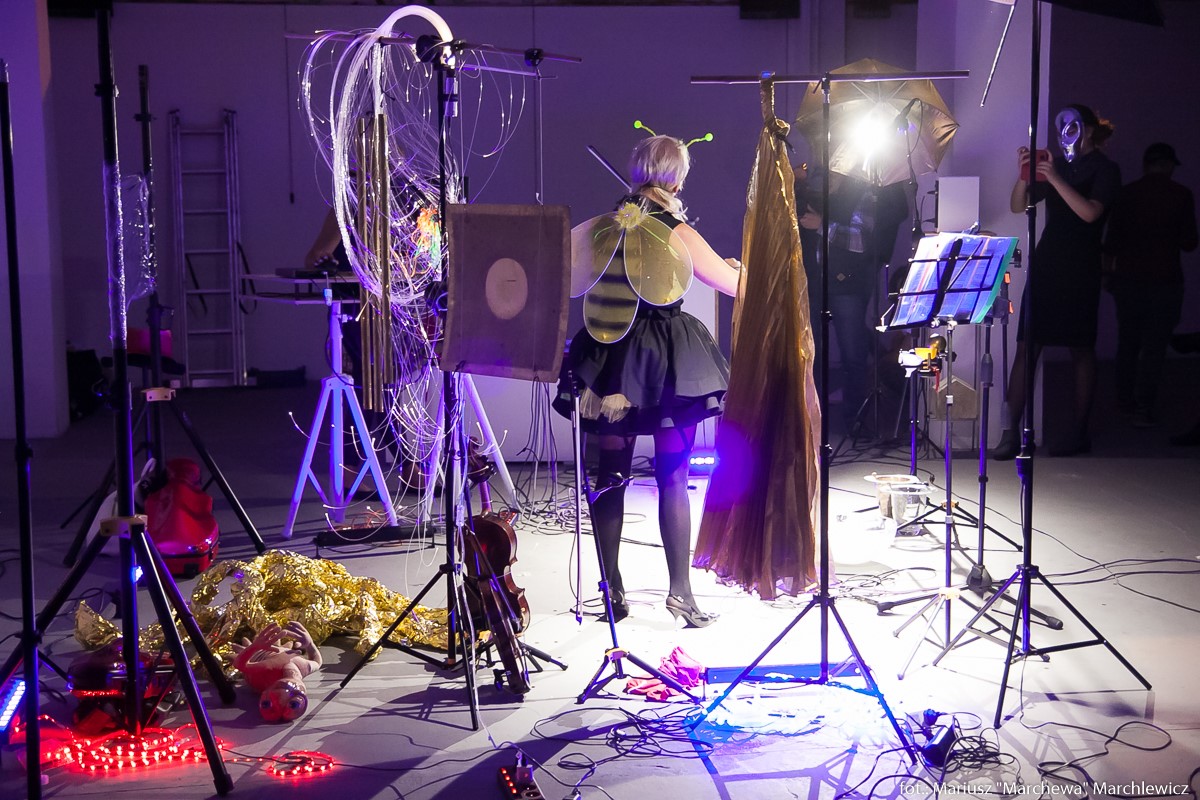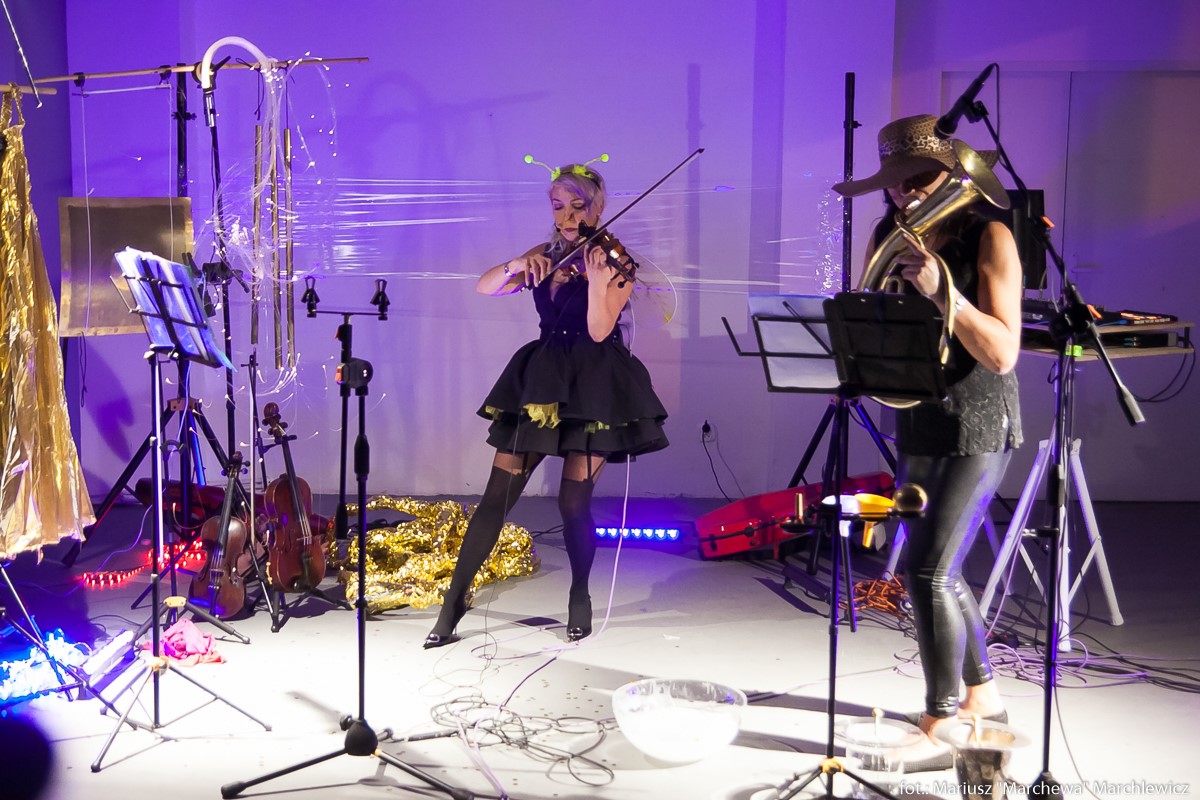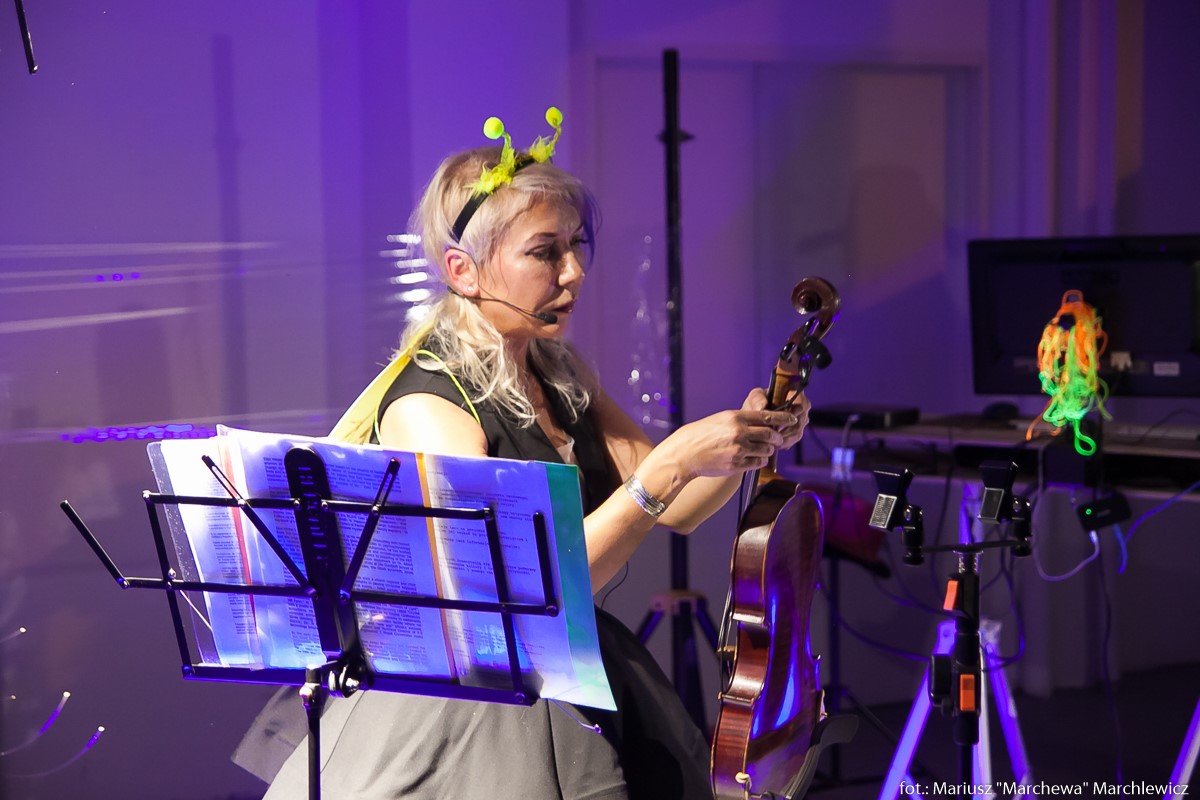24.09
The first day of the Interakcje festival was marked by intergenerational meetings. “Chłopcy PRL-owcy kontra Dzieci z Czarnej Dziury” – this year’s festival title and “Dyfuzje czasu” an exhibition prepared by Grzegorz Borkowski are two interpenetrating signals that art is wider than the generation and tendencies of the era. It takes place in a It takes place in a spacetime that is not linear – returns, references and dialogues are possible. This is the idea of Interaction – a performance festival with a long tradition, which is revealed in the mutual contact of artists and the audience, confrontation attitudes and building a network of connections. Grzegorz Borkowski at the exhibition „Dyfuzje Czasu” shows different types of connections between Polish art of the 70s and contemporary performative activities. The physical concept, associated with the uncontrolled penetration of particles, applies to phenomena in art that take place in the process. They have different nature. Some of them show how linguistic reality reflects the absurdity of the present (Zosia Kuligowska / Leszek Przyjemski). Others refer to reenactments, i.e. reaching for your own performances from the past to complement them with contemporary commentary (Ewa Bloom- Kwiatkowska / Angelika Fojtuch). Still others relate to the study of the phenomena of their own body work that fascinate performance artists regardless of the context of time (Paweł Kwiek / Natalia Lisova). The exhibition is dense with threads and encourages to penetrate into the relationships between individual works, which Grzegorz Borkowski composed in a very thoughtful way. It turns out that some topics do not lose their relevance – despite the passage of time and political contexts. We will always be close to our body and its experience, which is the most primal and invariably fascinating. This is clearly seen during the video performance „Breath” (2018) by Natalia Lisova and „Video and Breath” (1978) by Paweł Kwiek. They both show the synchrony of the breath and the object, space and new technologies.
They express the coexistence of matter and the mutual relationship between the body and what surrounds it and what is a form of its extension. A similar thread is raised by Angelika Fojtuch in the performance of „3 dots by Hieronim Bosch” (2007/2019), which turns an efficient, vertical body into a crawling pupa with impaired horizontal mobility. He recalls to this the images of Bosch, in which human figures look as if they emerged from dreamy visors. The artist created a visual situation that finally led to the fact that Bosch’s visions came to life in the small Dutch town of Hertogenbosch. It infected reality, which for a moment began to function completely differently than before. Performance registration can be seen at the exhibition. Another current topic is the language codes in the form of slogans, slogans, mot mots, threadbare sayings, song titles. Both Zosia Kuligowska and Leszek Przyjemski work with the word, examine its power and function as a communication medium. Przyjemski recalled various forms of polite refusal, such as: „Leszek, you dreamed me but not yet …”, showing different forms of censorship of the 70s. Zosia Kuligowska and Wojtek Bernatowicz distilled random phrases from their sound performances, which are a reflection of observations, feelings , fears and aspirations. Artistic identity is another topic raised at the exhibition. Ewa Bloom Kwiatkowska talks about her through the prism of her actions with the burning of her installations in the face of the turn of 1989. The spectacular action showed that a certain pattern was exhausted, some part is becoming obsolete and space for new ones is freed. There is also an interesting game between the pathos of ideology and anarchic actions that use the same spectacular poetics. Zbigniew Warpechowski watches over everything in the photo from the performance Dialogue with Death (1976), in which he tried to imagine the perfect future tense.
Barbara Konopka and Weronika Amelia Kami invited viewers to a fiction, prepared especially for Przemysław Kwiek. This is a proprietary type of affirmative performance whose aim is to honor the senior of the Polish avant-garde. Feliting literally means the wish for happiness. It has the character of a hommage à but this kind of tribute takes the form of an autonomous concert, which is governed by its own laws. In addition, fiction is also a commemoration of Aunt Felicja, who was a wonderfully independent non-conformist. All these meanings are combined in a formula developed by the artists. So far, several fictions have been held, including for Józef Robakowski and Zdzisław Ginger. The collective’s performance on Tuesday started the 21st Interactions festival. Everything took place in a feast of colors and sounds, an atmosphere of interspecific lightness („we are not artists, we are not even human”). A fluorescent inscription appeared on the transparent foil: „Only love turns the light, so only it creates”. The artists created a visual and sound situation that sucked the viewers into a fancy world, the only rule in it was the fluidity of forms, improvisation and interaction. There were echoes of Kwiek’s past actions undertaken as part of the KwieKulik duo in the 1970s. There were, however, no simple one-to-one translations of the actor’s acting of performance reality. Traces of „Activities with Dobromierz” or „Moses” took the form of distant reminiscences, immersed in magma, given in camp aesthetics that distorted and made them unreal. Playing the violin was mixed with the sounds of wind instruments and unusual percussion, which created a cosmic auditory space and deepened the mood of incredibleness. The psychoanalytic category das Unheimliche well captures the unique, extraterrestial environment that the artists built. Music of the spheres and jazz, gold, worms and string instruments – all elements had their place in it. Volunteers who turned into hybrid creatures were also involved in the action. Przemysław Kwiek commented on the action in his honor in a characteristic way: „I was embarrassed, but the reviews were good.”




